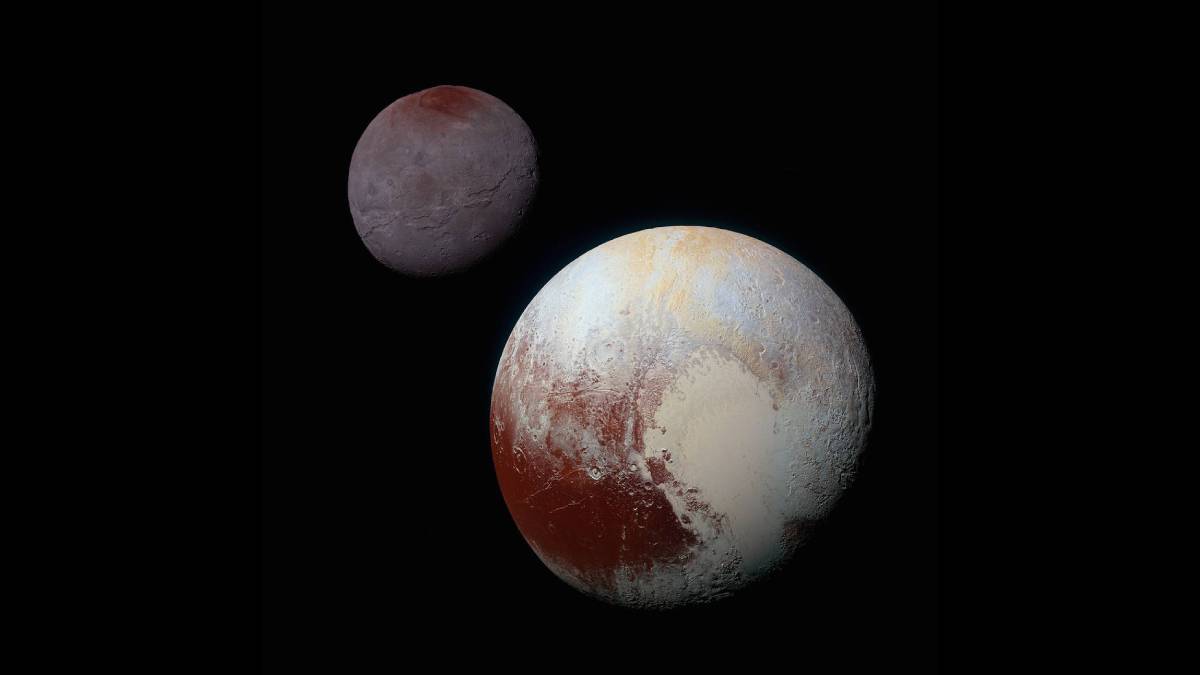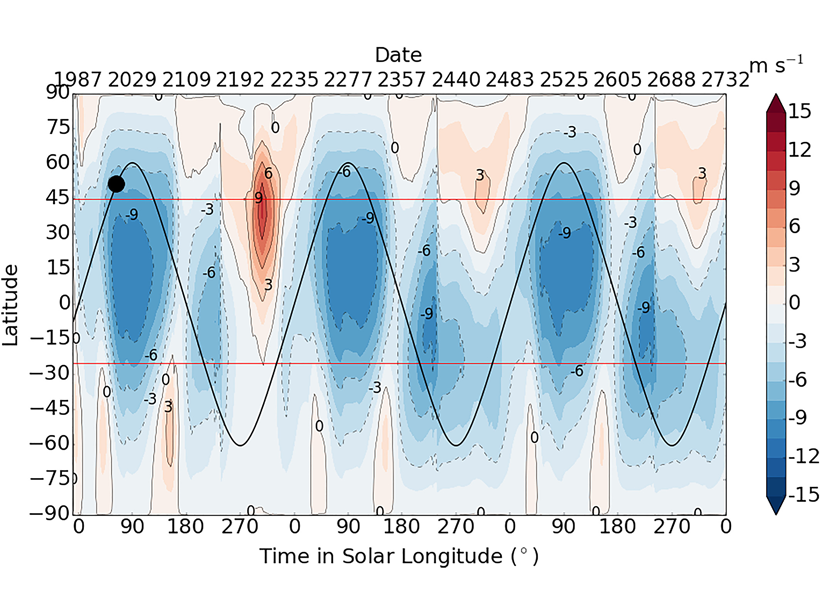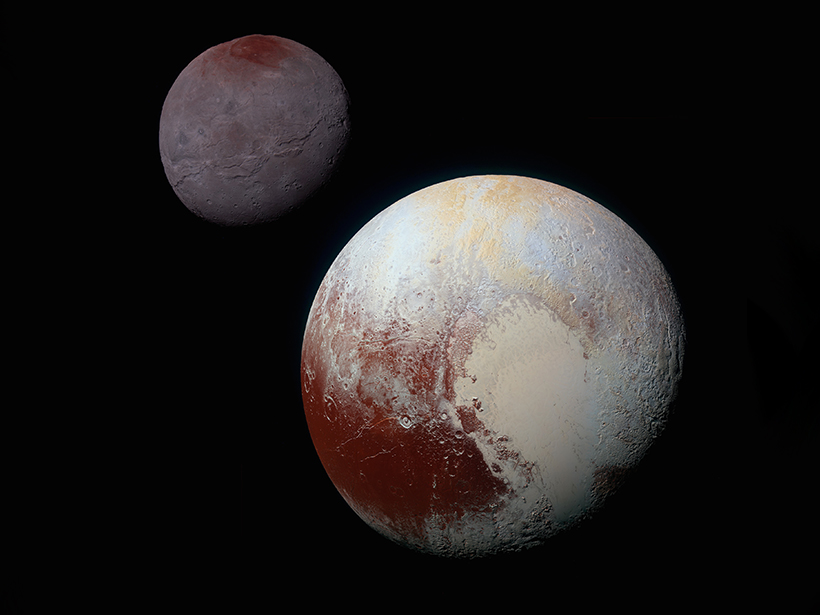A newly understood collision mechanism could explain some peculiarities of Pluto and its moons.
Pluto
Pluto’s Small Moons Are Unlike Any Other
The strange blend of surface chemistry on Nix and Hydra raises big question about the evolution of the Pluto system.
Pluto’s Surface Was Recently Sculpted by Icy Volcanism
Geologically young regions of Pluto’s southern hemisphere were likely resurfaced by cryovolcanism, data from the New Horizons spacecraft reveal.
Clues to Pluto’s History Lie in Its Faults
Studying geological features on Pluto’s surface can illuminate the ancient history of how the dwarf planet formed.
Capturing Pluto’s Heartbeat in a Computer
Unprecedented global climate model simulations, incorporating observational data from the New Horizons mission, reveal atmospheric circulations driven by a large ice cap on Pluto.
Ancient Impact’s Seismic Waves Reveal Pluto’s Ocean, Core
By modeling the waves produced by a massive, ancient impact, scientists have begun to unlock the secrets of Pluto’s interior.
Ammonia Ice Deposits on Pluto Hint at Recent Cryovolcanism
This discovery is the latest in a growing stack of evidence pointing to the presence of an ammonia-rich water ocean beneath Pluto’s icy crust.
Pluto’s and Charon’s Craters Reveal a Solar System Deficit
The New Horizons spacecraft recorded images of craters that imply an unexpected dearth of small objects in the Kuiper Belt.
New Book Conveys Details and Flavor of First Mission to Pluto
New Horizons principal investigator tells Eos that the mission has revolutionized our understanding of small planets.
Pluto’s Features Receive First Official Names
Names of mountains, plains, valleys, and craters honor human and technological pioneers, Pluto scientists, and underworld mythology from around the world.










